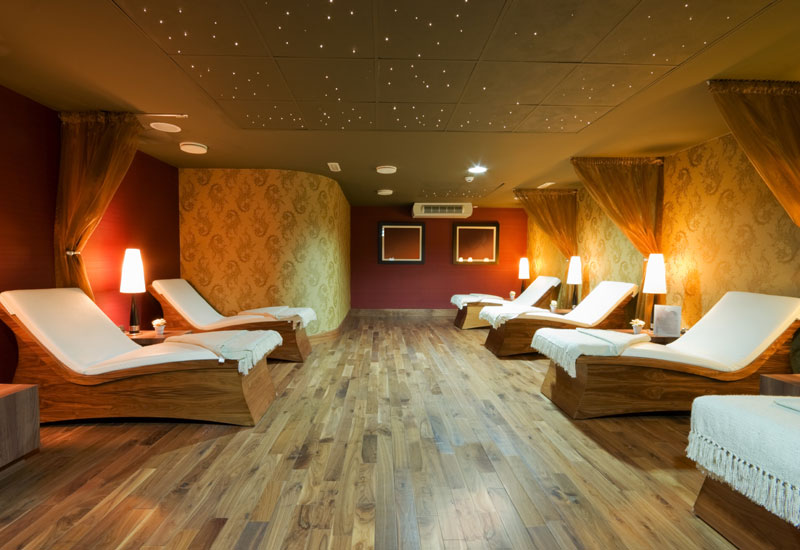Environment and ambience are extremely important when it comes to spas, and Alexandra Wormser, marketing specialist at Hansgrohe Middle East, said that designers are putting a lot more emphasis on blurring the line between indoors and outside. She commented: “Increasingly, natural and native materials and furnishings built by local craftsmen are being used. Instead of all polished stone, for example, fragrant and aromatic woods and tubs made out of a treated wood are being seen.”
Kerrie Black, marketing manager at BagnoDesign, agreed that spa materials are going back to nature, with marble and timber being particularly prominent. “Corresponding with this trend, there is also a shift away from chrome brassware towards finishes such as brushed nickel, copper and gold, with consumers now having more choice available to them, depending on the style of basin they are opting for,” said Black, adding that minimalism is a key trend.
Louise Pitt, marketing manager at Geberit, said that the hotel spa should be designed with the end user’s complete experience taken into consideration, along with utilisation and occupancy revenues, and the type of hotel the spa is located in.
“Acoustics play such an important role for the ambience of the spa and should be high on the list of priorities,” said Pitt, adding that there is a demand for the high-performance products and designs that have an eye on budget, but still offer luxurious and indulgent spaces. “Also, metallic flush actuation plates have seen a huge surge in popularity and add a touch of glamour to the modern spa. They reflect light and exude style, and we offer the possibility of customising the actuator plate to an individual spa theme.”
Wormser added that a continuing rise in wellness-related technology is making it much easier for designers to obtain sustainable objectives. “This ranges from new systems designed to improve the handling of water, including water consumption and filtration, a varied array of apps as well as a wearable technology offering immediate diagnostics, body mass measurements and personal training,” she said, adding that three years ago Hansgrohe was awarded the Trustmark for Environmental Performance by the Abu Dhabi Quality and Conformity Council for 11 of its products.
Black agreed that sustainability is an important consideration for the contract sector, so consequently it becomes an issue for manufacturers and suppliers too.
“In particular, water efficiency and the need for water efficient products is becoming a primary concern for the hotel and spa sector,” said Black. “This is in part due to the rising cost of water as a commodity and hence the requirement for hotels to reduce the amount of water they use and become more sustainable.”
Black added that designers are being met with the challenge of successfully combining practical elements with aesthetic values and usability and they don’t always get that right. “Design should always follow function, regardless of the temptation to do otherwise. It is all very well the spa looking the part but it needs to be comfortable and practical for guests, too,” she said.
Wormser noted that a common mistake in spa design included spatial planning, but also over-design.

| Advertisement |









 Search our database of more than 2,700 industry companies
Search our database of more than 2,700 industry companies









